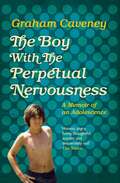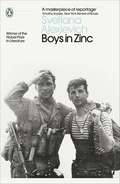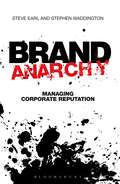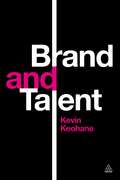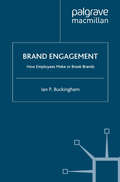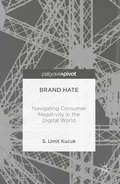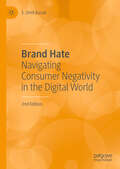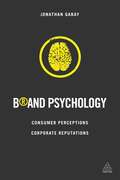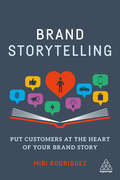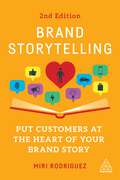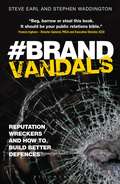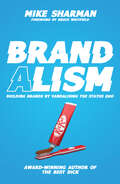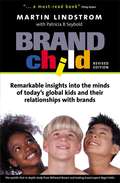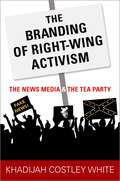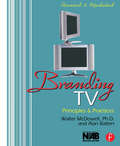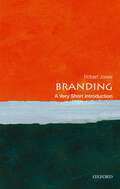- Table View
- List View
Bourdieu in Translation Studies: The Socio-cultural Dynamics of Shakespeare Translation in Egypt (Routledge Advances in Translation and Interpreting Studies)
by Sameh HannaThis book explores the implications of Pierre Bourdieu’s sociology of cultural production for the study of translation as a socio-cultural activity. Bourdieu’s work has continued to inspire research on translation in the last few years, though without a detailed, large-scale investigation that tests the viability of his conceptual tools and methodological assumptions. With focus on the Arabic translations of Shakespeare’s tragedies in Egypt, this book offers a detailed analysis of the theory of ‘fields of cultural production’ with the purpose of providing a fresh perspective on the genesis and development of drama translation in Arabic. The different cases of the Arabic translations of Hamlet, Macbeth, King Lear and Othello lend themselves to sociological analysis, due to the complex socio-cultural dynamics that conditioned the translation decisions made by translators, theatre directors, actors/actresses and publishers. In challenging the mainstream history of Shakespeare translation into Arabic, which is mainly premised on the linguistic proximity between source and target texts, this book attempts a ‘social history’ of the ‘Arabic Shakespeare’ which takes as its foundational assumption the fact that translation is a socially-situated phenomenon that is only fully appreciated in its socio-cultural milieu. Through a detailed discussion of the production, dissemination and consumption of the Arabic translations of Shakespeare’s tragedies, Bourdieu in Translation Studies marks a significant contribution to both sociology of translation and the cultural history of modern Egypt.
The Boy with the Perpetual Nervousness: A Memoir of an Adolescence
by Graham CaveneyA Sunday Times Book of the Year'Passionate and courageous, insightful and humane, funny and moving, this is a wonderful book' David Nicholls, author of One DayGraham Caveney was born in 1964 in Accrington: a town in the north of England, formerly known for its cotton mills, now mainly for its football team. Armed with his generic Northern accent and a record collection including the likes of the Buzzcocks and Joy Division, Caveney spent a portion of his youth pretending he was from Manchester. That is, until confronted by someone from Manchester (or anyone who had been to Manchester or anyone who knew anything at all about Manchester) at which point he would give up and admit the truth. In The Boy with the Perpetual Nervousness, Caveney describes growing up as a member of the 'Respectable Working Class'. From aspiring altar boy to Kafka-quoting adolescent, his is the story of a teenage boy's obsession with music, a love affair with books, and how he eventually used them to plot his way out of his home town. But this is also a story of abuse.For his parents, education was a golden ticket: a way for their son to go to university, to do better than they did, but for Graham, this awakening came with a very significant condition attached. For years Graham's headteacher, a Catholic priest, was his greatest mentor, but he was also his abuser. As an adult, Graham Caveney is still struggling to understand what happened to him, and he writes about the experience - all of it - and its painful aftermath with a raw, unflinching honesty. By turns, angry, despairing, insightful, always acutely written and often shockingly funny, The Boy with the Perpetual Nervousness is an astonishing memoir, startling in its originality.
Boys Adrift: The Five Factors Driving the Growing Epidemic of Unmotivated Boys and Underachieving Young Men
by Leonard SaxWhy America's sons are underachieving, and what we can do about it.Something is happening to boys today. From kindergarten to college, American boys are, on average, less resilient and less ambitious than they were a mere twenty years ago. The gender gap in college attendance and graduation rates has widened dramatically. While Emily is working hard at school and getting A's, her brother Justin is goofing off. He's more concerned about getting to the next level in his videogame than about finishing his homework.In Boys Adrift, Dr. Leonard Sax delves into the scientific literature and draws on more than twenty years of clinical experience to explain why boys and young men are failing in school and disengaged at home. He shows how social, cultural, and biological factors have created an environment that is literally toxic to boys. He also presents practical solutions, sharing strategies which educators have found effective in re-engaging these boys at school, as well as handy tips for parents about everything from homework, to videogames, to medication.
Boys in Zinc (Penguin Modern Classics)
by Andrew Bromfield Svetlana AlexievichThe haunting history of the Soviet-Afghan War from the winner of the Nobel Prize in Literature 2015- A new translation based on the updated text - From 1979 to 1989 Soviet troops engaged in a devastating war in Afghanistan that claimed thousands of casualties on both sides. While the Soviet Union talked about a 'peace-keeping' mission, the dead were shipped back in sealed zinc coffins. Boys in Zinc presents the honest testimonies of soldiers, doctors and nurses, mothers, wives and siblings who describe the lasting effects of war. Weaving together their stories, Svetlana Alexievich shows us the truth of the Soviet-Afghan conflict: the killing and the beauty of small everyday moments, the shame of returned veterans, the worries of all those left behind. When it was first published in the USSR in 1991, Boys in Zinc sparked huge controversy for its unflinching, harrowing insight into the realities of war.
Brand Anarchy: Managing corporate reputation
by Stephen Waddington Steve EarlAs the media landscape looks increasingly diverse and anarchic, individuals, organisations and governments should not waste time wondering whether they have lost control of their reputations. The simple fact is that they have never had control. The question is what they can do about it now, and what they need to consider for the future.The fragmentation of media and the rise of social media has brought brand and personal reputational risk into sharp focus like never before. Disaffected shareholders, customers and staff are voicing their opinions to a global internet audience. In a brand context, it's reputation anarchy.In Brand Anarchy, Steve Earl and Stephen Waddington draw on insight from opinion-makers and shapers such as Greg Dyke, Alastair Campbell, Mark Thompson and Seth Godin to explore how reputations can be better managed and the new challenges that the future of media may bring.This plain-speaking, shrewd book pulls no punches. It's a survival guide for anyone concerned what others think or say about them.
Brand and Talent
by Kevin KeohaneFew business strategy books talk about brand management and talent management under the same cover. Brand and Talent shows how high performance organizations are using this philosophy to drive clarity and growth as they bring their purpose, ambition, strategy and proposition to life from the inside out.In a world replete with experts in branding and brand management, mirrored by experts in talent attraction, engagement and development, there is a clear need for far greater alignment of these two overlapping disciplines. This means more than paying lip service to recruitment media campaigns masquerading as so-called "employer brands", which can often cause damage to or dilute an organization's reputation as an enterprise is dependent upon your reputation as an employer - and vice versa.In Brand and Talent, author Kevin Keohane looks at how organizations can better communicate with people before, during and after their association with the enterprise. He presents a "joined up" approach that encompasses the needs of brand, marketing, human resources, corporate communications, internal communications and IT. He integrates academic and commercial evidence, as well as practical advice and includes case studies and interviews.
Brand and Talent
by Kevin KeohaneFew business strategy books talk about brand management and talent management under the same cover. Brand and Talent shows how high performance organizations are using this philosophy to drive clarity and growth as they bring their purpose, ambition, strategy and proposition to life from the inside out.In a world replete with experts in branding and brand management, mirrored by experts in talent attraction, engagement and development, there is a clear need for far greater alignment of these two overlapping disciplines. This means more than paying lip service to recruitment media campaigns masquerading as so-called "employer brands", which can often cause damage to or dilute an organization's reputation as an enterprise is dependent upon your reputation as an employer - and vice versa.In Brand and Talent, author Kevin Keohane looks at how organizations can better communicate with people before, during and after their association with the enterprise. He presents a "joined up" approach that encompasses the needs of brand, marketing, human resources, corporate communications, internal communications and IT. He integrates academic and commercial evidence, as well as practical advice and includes case studies and interviews.
Brand Engagement (International Political Economy Series)
by I. BuckinghamThis book debunks the notion that the Chief Executive is the primary figurehead and places line managers at the forefront. Using a mixture of unique but tried and tested bespoke management models and case studies, line managers are identified as the critical community in the war between brands.
Brand Hate: Navigating Consumer Negativity in the Digital World
by S. Umit KucukThis book focuses on the concept of “brand hate” and consumer negativity in today’s digital markets. It explores the emotional detachment consumers generate against valued brands and how negative experiences affect their and other consumers' loyalty. In today's world, it is almost impossible not to run into hateful language about companies and their brands in digital consumption spaces. Consumer hostility and hate is not hidden and silent but is now openly shared on many online anti-brand websites, consumer social networking sites, and complaint and review boards as a result of the Internet's democratic architecture. The book defines consumer brand hate and discusses its dimensions, antecedents, and consequences as well as the semiotics and legality of such brand hate activities based on current brand dilution arguments. It describes the situations which lead to anti-branding and how consumers choose to express their dissatisfaction with a company on individual and social levels. Finally, it provides strategic perspectives on how to handle such situations to achieve better functioning markets for scholars and practitioners in marketing, psychology, and consumer behavior.
Brand Hate: Navigating Consumer Negativity in the Digital World
by S. Umit KucukThis book focuses on the concept of “brand hate” and consumer negativity in today’s digital markets. It explores the emotional detachment consumers generate against valued brands and how negative experiences affect their and other consumers' loyalty. It is almost impossible not to run into hateful language about companies and their brands in today’s digital consumption spaces. Consumer hostility and hate is not hidden and silent anymore but is now openly shared on many online anti-brand websites, consumer social networking sites, and complaint and review boards. The book defines consumer brand hate and discusses its dimensions, antecedents, and consequences as well as the semiotics and legality of such brand hate activities based on current brand dilution arguments. It describes the situations which lead to anti-branding and how consumers choose to express their dissatisfaction with a company on individual and social levels. This newly updated edition discusses recent research findings from brand hate literature with new cases and extended managerial analysis. Thus, the book provides strategic perspectives on how to handle such situations to achieve better functioning markets for scholars and practitioners in marketing, psychology, and consumer behavior.
Brand Psychology: Consumer Perceptions, Corporate Reputations
by Jonathan GabayWhy do we trust some brands more than others? How important is integrity for a brand's survival? How can brand confidence be rebuilt during a crisis? Using both new and classic insights from social psychology, cognitive psychology and neuroscience, Brand Psychology reveals the hidden processes behind why certain brands command our loyalty, trust and - most importantly - disposable income. Reputation management authority Jonathan Gabay takes readers on a tour of the corporate, political, and personal brands whose understanding of consumer psychology has either built or broken them.Suitable for marketing, branding and PR professionals, reputation management specialists and students, Brand Psychology takes examples from e-cigarette legislation, the iPhone 5S's fingerprint ID technology, Barclays' branded bikes and the London 2012 Olympics, Miley Cyrus and the UK National Health Service's big data to reveal how to build a meaningful brand that resonates with the public.
Brand Psychology: Consumer Perceptions, Corporate Reputations
by Jonathan GabayWhy do we trust some brands more than others? How important is integrity for a brand's survival? How can brand confidence be rebuilt during a crisis? Using both new and classic insights from social psychology, cognitive psychology and neuroscience, Brand Psychology reveals the hidden processes behind why certain brands command our loyalty, trust and - most importantly - disposable income. Reputation management authority Jonathan Gabay takes readers on a tour of the corporate, political, and personal brands whose understanding of consumer psychology has either built or broken them.Suitable for marketing, branding and PR professionals, reputation management specialists and students, Brand Psychology takes examples from e-cigarette legislation, the iPhone 5S's fingerprint ID technology, Barclays' branded bikes and the London 2012 Olympics, Miley Cyrus and the UK National Health Service's big data to reveal how to build a meaningful brand that resonates with the public.
Brand Revolution: Rethinking Brand Identity
by M. SicardBrand Revolution offers a radical new approach to brand management. With big brand case studies including L'Oreal and Jaguar, the author draws on her extensive experience as a marketing consultant to put together this highly engaging and practical book for developing, improving and controlling the identity of your brand.
Brand Storytelling: Put Customers at the Heart of Your Brand Story
by Miri RodriguezDespite understanding essential storytelling techniques, brands continue to explain how their product or service can help the customer, rather than showcasing how the customer's life has changed as a result of them. Brand Storytelling gets back to the heart of brand loyalty, consumer behaviour and engagement as a business strategy: using storytelling to trigger the emotions that humans are driven by. It provides a step by step guide to assess, dismantle and rebuild a brand story, shifting the brand from a 'hero' to 'sidekick' mentality, and positioning the customer as a key influencer to motivate the audience. Written by the award-winning storyteller Miri Rodriguez at Microsoft, Brand Storytelling is a clear, actionable guide that goes beyond content strategy, simplifying where to begin, how to benchmark success and ensuring a consistent brand voice throughout every department. Inspiring with interviews, advice and case studies from leading brands like Expedia, Coca Cola, McDonalds, Adobe and Google, it clarifies why machine-learning, AI and automation only tell one side of the story. Aligning an emotive connection with the customer's personal values, experiences and aspirations will enable brand leaders, employees and influencers to celebrate and strengthen brand engagement for long-term growth, rather than trying to win it.
Brand Storytelling: Put Customers at the Heart of Your Brand Story
by Miri RodriguezWritten by the award-winning storyteller Miri Rodriguez at Microsoft, this bestselling book gets back to the heart of brand loyalty, consumer behavior and engagement as a business strategy by using storytelling to trigger the emotions that humans are driven by.Despite understanding essential storytelling techniques, brands continue to explain how their product or service can help the customer, rather than showcasing how the customer's life has changed as a result of them. This second edition of Brand Storytelling contains new trends in storytelling, as well as expanding on story experience and employee experience. This book will explore the future of brand storytelling in a post pandemic era. New to this edition will also be a 'How to Guide' taking readers through each step of the design thinking process in order to prototype their stories.Brand Storytelling provides a step-by-step guide to assess, dismantle and rebuild a brand story, shifting the brand from a 'hero' to 'sidekick' mentality and positioning the customer as a key influencer to motivate the audience. Clarifying why machine-learning, AI and automation only tell one side of the story, this book will inspire you with cutting edge interviews and case studies from leading brands like Expedia, Coca Cola, McDonalds, Adobe and Google to tap into authentic brand loyalty and human connection.
Brand Vandals: Reputation Wreckers and How to Build Better Defences
by Steve Earl Stephen WaddingtonThanks to the rise of social media, what audiences think and say about organisations has never been more critical. Steve Earl and Stephen Waddington's Brand Anarchy examined the impact of media change and the new reputation landscape brought about by disaffected shareholders, customers and staff voicing their opinions to a global Internet audience. The authors continue the story here with the brand vandals going one step further; mobilising themselves, and the Internet, to wage war on organisations and willfully cause lasting reputational damage. For the organization, engagement isn't an option – it's a necessity. Brand vandals are forcing a level of dialogue that organisations, public and private, have never had to contemplate before.Smart organisations are helping to define the future of modern brand communication by retooling their public relations and communications teams to truly get to grips with the challenge of engaging audiences in a 24/7 conversation that not only answers criticism, but positively rebuilds corporate reputation. Is your organisation ready for the brand vandals?
Brand Vandals: Reputation Wreckers and How to Build Better Defences
by Steve Earl Stephen WaddingtonThanks to the rise of social media, what audiences think and say about organisations has never been more critical. Steve Earl and Stephen Waddington's Brand Anarchy examined the impact of media change and the new reputation landscape brought about by disaffected shareholders, customers and staff voicing their opinions to a global Internet audience. The authors continue the story here with the brand vandals going one step further; mobilising themselves, and the Internet, to wage war on organisations and willfully cause lasting reputational damage. For the organization, engagement isn't an option – it's a necessity. Brand vandals are forcing a level of dialogue that organisations, public and private, have never had to contemplate before.Smart organisations are helping to define the future of modern brand communication by retooling their public relations and communications teams to truly get to grips with the challenge of engaging audiences in a 24/7 conversation that not only answers criticism, but positively rebuilds corporate reputation. Is your organisation ready for the brand vandals?
Brandalism: Building brands by vandalising the status quo
by Mike SharmanIn BRANDALISM, the follow-up to his bestselling, award-winning debut book The Best Dick, Mike Sharman delves into the (start)ups and downs associated with brand building and the need for business to dismantle, and vandalise its perceived, public-facing, persona.The future of PR and influence, when (or if) to launch a new business as opposed to a division, raising capital, the impact of presentations, startup school fees, and emphasis on a manifesto rather than purpose, are the aspects Mike obsesses over in this insightful read, wrapped in his trademark, comedic, copy.Mike Sharman, the co-founder of the creative, digital agency Retroviral that has made more brands ‘go viral’, globally, than any other agency in Africa, uses his unique storytelling proposition to provide insight into 12 years of building a business from scratch, while elevating his clients to emotional, (commercial) cult status.“Mike Sharman delivers the well needed wake-up call that your brand needs (and your customers deserve).” – Richard Mulholland
Brandchild: Remarkable Insights into the Minds of Today's Global Kids and Their Relationship with Brands (1st edition) (PDF)
by Martin Lindstrom Patricia SeyboldPraise and Reviews This is a must read book... Lindstrom provides fascinating stories taking you into the mental and emotional life of this new generation...- Philip Kotler, S C Johnson amp; Sons Distinguished Professor of International Marketing, Northwestern University, Kellogg School of ManagementBRANDchild will be a valuable addition to our industry's literature.- Lester Wunderman, Chairman Emeritus and founder of Wunderman Cato JohnsonLindstrom's fascinating tour-de-force may have you staying awake for 60 hours in order to mine the kids-focused marketing wisdom.- Stann Rapp, MRM Partners Worldwide and co-founder of Rapp CollinsTweens (8- to 14-year-olds) are an increasingly powerful and smart consumer group that spent $300 billion across the globe last year and influenced another $350 billion spend through their parents. Based on the world's most extensive study of tween attitudes and behaviours, and now available in paperback, BRANDchild is the first book to look in-depth at the phenomena behind global kids and their relationships with brands.Conducted by Millward Brown, the leading global market research agency, the BRANDchild survey involved several thousand kids from more than 70 cities in 14 countries (throughout Europe, Asia, the United States and South America). Several renowned experts share their unique views on kids' trends and fascinating marketing techniques.Packed with practical advice on how to create kids' brands, including more than 50 previously unpublished case studies, BRANDchild proposes innovative ways of marketing to this young audience.
Brandchild: Remarkable Insights into the Minds of Today's Global Kids and Their Relationship with Brands (1st edition) (PDF)
by Martin Lindstrom Patricia SeyboldPraise and Reviews This is a must read book... Lindstrom provides fascinating stories taking you into the mental and emotional life of this new generation...- Philip Kotler, S C Johnson amp; Sons Distinguished Professor of International Marketing, Northwestern University, Kellogg School of ManagementBRANDchild will be a valuable addition to our industry's literature.- Lester Wunderman, Chairman Emeritus and founder of Wunderman Cato JohnsonLindstrom's fascinating tour-de-force may have you staying awake for 60 hours in order to mine the kids-focused marketing wisdom.- Stann Rapp, MRM Partners Worldwide and co-founder of Rapp CollinsTweens (8- to 14-year-olds) are an increasingly powerful and smart consumer group that spent $300 billion across the globe last year and influenced another $350 billion spend through their parents. Based on the world's most extensive study of tween attitudes and behaviours, and now available in paperback, BRANDchild is the first book to look in-depth at the phenomena behind global kids and their relationships with brands.Conducted by Millward Brown, the leading global market research agency, the BRANDchild survey involved several thousand kids from more than 70 cities in 14 countries (throughout Europe, Asia, the United States and South America). Several renowned experts share their unique views on kids' trends and fascinating marketing techniques.Packed with practical advice on how to create kids' brands, including more than 50 previously unpublished case studies, BRANDchild proposes innovative ways of marketing to this young audience.
The Branding of Right-Wing Activism: The News Media and the Tea Party
by Khadijah Costley WhiteFrom the start of Barack Obama's presidency in 2009, conservative populist groups began fomenting political fractiousness, dissent, and surprising electoral success. The Tea Party was one of the major characters driving this story. But, as Khadijah Costley White argues in this book, the Tea Party's ascent to major political phenomenon can be attributed to the way in which partisan and non-partisan news outlets "branded" the Party as a pot-stirrer in political conflicts over race, class, and gender. In other words, the news media played a major role in developing, cultivating, and promoting populism's brand, particularly within the news spaces of commentary and opinion. Through the language of political marketing, branding, and promotion, the news media not only reported on the Tea Party, but also acted as its political strategist and brand consultant. Moreover, the conservative press acted more as a political party than a news medium, deliberately promoting the Tea Party, and aiding in organizing, headlining, and galvanizing a conservative political base around specific Tea Party candidates, values, and events. In a media environment in which everyone has the opportunity to tune out, tune in, and speak back, The Branding of Right-Wing Activism ultimately shows that distinctions between citizens, journalists, activists, politicians, celebrities, and consumers are more symbolic than concrete.
BRANDING OF RIGHT-WING ACTIVISM C: The News Media and the Tea Party
by Khadijah Costley WhiteFrom the start of Barack Obama's presidency in 2009, conservative populist groups began fomenting political fractiousness, dissent, and surprising electoral success. The Tea Party was one of the major characters driving this story. But, as Khadijah Costley White argues in this book, the Tea Party's ascent to major political phenomenon can be attributed to the way in which partisan and non-partisan news outlets "branded" the Party as a pot-stirrer in political conflicts over race, class, and gender. In other words, the news media played a major role in developing, cultivating, and promoting populism's brand, particularly within the news spaces of commentary and opinion. Through the language of political marketing, branding, and promotion, the news media not only reported on the Tea Party, but also acted as its political strategist and brand consultant. Moreover, the conservative press acted more as a political party than a news medium, deliberately promoting the Tea Party, and aiding in organizing, headlining, and galvanizing a conservative political base around specific Tea Party candidates, values, and events. In a media environment in which everyone has the opportunity to tune out, tune in, and speak back, The Branding of Right-Wing Activism ultimately shows that distinctions between citizens, journalists, activists, politicians, celebrities, and consumers are more symbolic than concrete.
Branding TV: Principles and Practices
by Walter McDowell Alan BattenIn an effort to halt increasing media competition and decreasing audience shares, Branding has become the new mantra among television station and network executives. Branding TV: Principles and Practices second edition goes beyond the jargon of branding to explain the essential principles underlying successful branding and offers many practical strategies to measure, build and manage television brand equity. For instructional purposes, the book pays particular attention to the local commercial TV station and its news franchise. Written by broadcast professionals with years of experience, this book shows how the notions of branding are no more prevalent than in the battle for dominance in local news. The practical suggestions in the book will help the savvy manager understand and take advantage of branding in their efforts to move their property to the forefront in the marketplace.
Branding TV: Principles and Practices
by Walter McDowell Alan BattenIn an effort to halt increasing media competition and decreasing audience shares, Branding has become the new mantra among television station and network executives. Branding TV: Principles and Practices second edition goes beyond the jargon of branding to explain the essential principles underlying successful branding and offers many practical strategies to measure, build and manage television brand equity. For instructional purposes, the book pays particular attention to the local commercial TV station and its news franchise. Written by broadcast professionals with years of experience, this book shows how the notions of branding are no more prevalent than in the battle for dominance in local news. The practical suggestions in the book will help the savvy manager understand and take advantage of branding in their efforts to move their property to the forefront in the marketplace.
Branding: A Very Short Introduction (Very Short Introductions)
by Robert JonesBranding is possibly the most powerful commercial and cultural force on the planet. Iconic names such as Coca-Cola, Nike, Manchester United, Harry Potter, and Google are known and recognized by millions of people worldwide. As the market economy spreads across the world, brands are becoming ever more prevalent. The Apple brand has been valued at $98 billion - more than the GDP of Slovakia. Every day, we're exposed to more than 3500 brand messages. And even though people are increasingly brand-aware and brand-sceptical, they are nevertheless seduced by brands. We may reject the whole brand system, but we still wouldn't be parted from our Apple Macs. Brands are impossible to escape. In this Very Short Introduction Robert Jones discusses the rising omnipresence of brands, and analyses how they work their magic. He considers the incredible potency of brands as a commercial, social, and cultural force, and looks at the many different kinds of brands that exist - from products, services, and artistic properties, to companies, charities, sports clubs, and political parties. Defining what we mean by the word 'brand', he explores both the positive and negative aspects of brands. Finally Jones considers the business of branding, and asks whether the idea of brands and branding is starting to decline, or whether it has a long future ahead. ABOUT THE SERIES: The Very Short Introductions series from Oxford University Press contains hundreds of titles in almost every subject area. These pocket-sized books are the perfect way to get ahead in a new subject quickly. Our expert authors combine facts, analysis, perspective, new ideas, and enthusiasm to make interesting and challenging topics highly readable.

